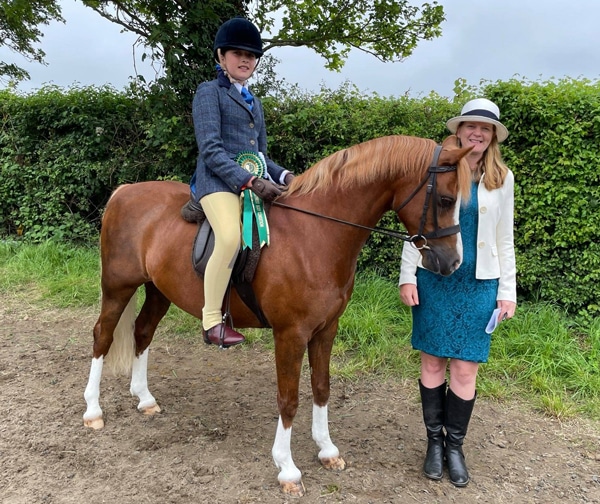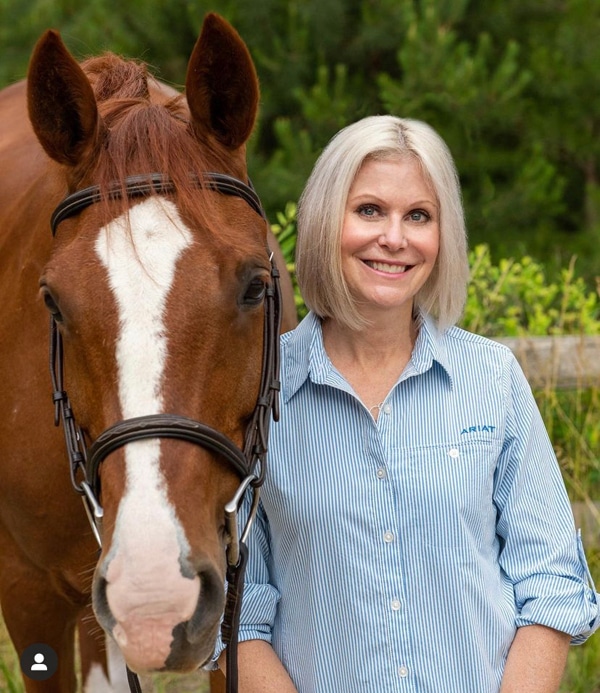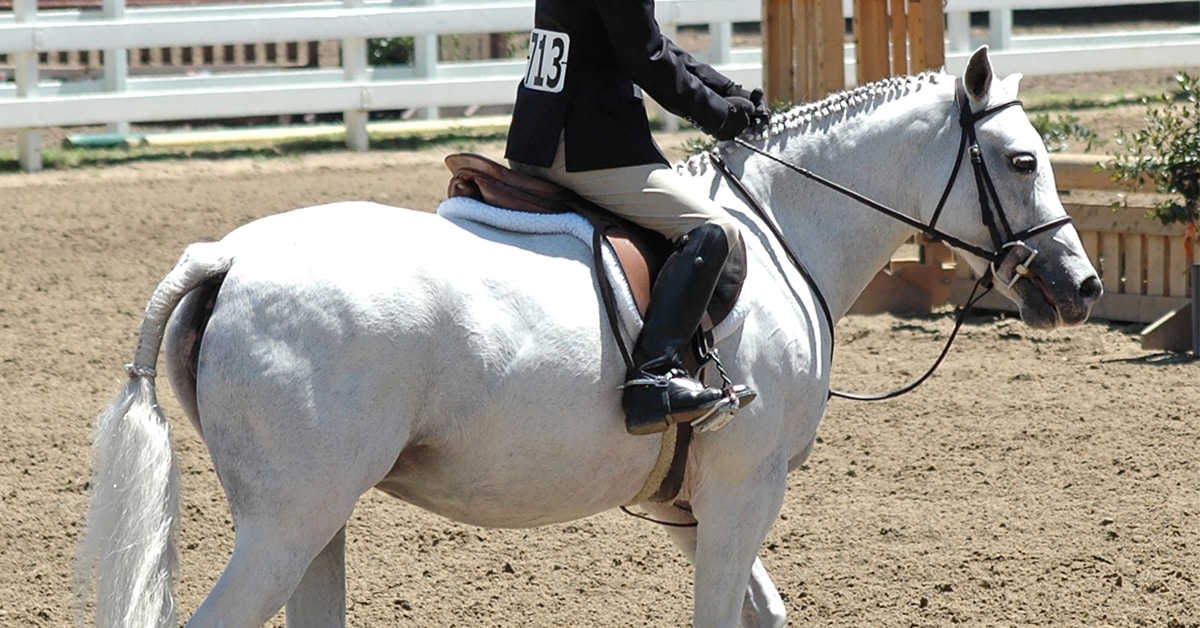A recent study was presented at the International Conference on Equine Exercise Physiology in Stockholm, Sweden, by our nutrition writer, Dr. Shannon Pratt-Phillips. Her presentation entitled, “Judges favor adiposity in athletic show ponies” was based on research she conducted at the USEF Pony Finals competition at the Kentucky Horse Park in Lexington in 2021.
After attending the Pony Finals a few years prior, Dr. Pratt-Phillips realized that many ponies were being “fattened up” for the competition. It is well known that adiposity increases the risk of equine metabolic syndrome and an increase in body condition score rated on a scale from 1-9 (a subjective measure of subcutaneous body fat) and cresty neck score (a subjective measure of fat along the crest of the neck) are also associated with increased risk of developing laminitis and/or increased severity of the disease. It is also likely that carrying additional weight as fat contributes to the work load of the pony, and could contribute to the development of arthritic conditions over time.
There have been studies documenting that judges are more lenient towards overweight vs. thinner horses and ponies, or that owners feel pressure to keep their horses in higher levels of body condition to succeed at competition, and Dr. Pratt-Phillips sought to investigate this further. She chose Pony Finals as she had witnessed a large number of overweight animals on a previous occasion and knew it was a venue where she could observe hundreds of ponies. She also knew that as ponies are more likely to develop laminitis than horses, it is even more important that ponies don’t get fat in the first place. She also chose this competition because the winners set a precedent for future years.

In the UK, The Horse Trust recognizes healthy body condition with their “Weigh To Win” initiative. (The Horse Trust photo)
Together with a colleague, they evaluated 337 large and medium ponies for body condition score and cresty neck score before they entered the show ring for the Model phase. (Pony Finals has three phases: Model, which is judged on conformation and appearance; Under Saddle, which is judged on the pony being ridden on the flat; and the Jumping phase, which is judged on the pony’s jumping performance around a course). They chose the Model phase because the score would be less likely influenced by the rider/handler compared to the under saddle and jumping phase. In the Model phase, the ponies are judged from 0-100 points by three independent judges, to give a total Model score out of 300. The body condition score and cresty neck score were then compared to the overall Model score.
Overall, the ponies were overweight – with an average score of 6.7 on the 1 – 9 Henneke body condition scoring scale. Scores ranged from 5.25 – 8.25 – indicating not only were none of these ponies considered “ideal” with a score of 5/9, but that most of them were overweight (>6/9) or obese (>7/9). The average cresty neck score was 2.8 (on the 0 – 5 Carter cresty neck score), also indicating that these ponies tended to have very cresty necks. This information alone suggests that most of the ponies at Pony Finals were at significant risk of developing laminitis.
When comparing the condition scores to the Model score, it became evident that adiposity was in fact being rewarded in the show ring. There was a significant relationship between body condition score and the overall Model score, suggesting that fatter ponies had higher Model scores.
This was even more evident when looking only at the large ponies. What was also interesting was that any pony with a body condition score below 6 did not generate a Model score higher than 245/300, with an average score closer to 225/300. It did appear, however, that the ponies that scored an 8 or higher only had top scores of 235/300. Therefore, while grossly obese ponies didn’t win, the ponies with more ideal body condition scores also didn’t win. Of course, the study reports correlations and not cause-and-effect, but shows that regardless of a pony’s conformation, fatter ponies scored better.
This is a worrisome finding, as it is feared that pony owners and trainers will further fatten up their ponies in efforts to win more classes, ultimately putting the animal’s welfare at stake for the sake of winning. Therefore, Dr. Pratt-Phillips thinks it is important that judges and stewards be educated further about body condition scoring, with potential penalties for overweight animals (just as animals that would be deemed too thin are often excused from competition). She suggests that horse shows should consider hiring a nutritionist to evaluate animals at the show, or perhaps offer incentives for the best-conditioned animals, similar to the “Weigh to Win” series in the UK.

Shannon Pratt-Phillips.
A limitation to the study was the inability to actually touch the horses to better feel the subcutaneous fat, but this was not possible as “the ponies were Show-Sheened to the max!” as Dr. Pratt-Phillips describes. Despite this limitation, she feels very confident that these ponies were indeed fat, not muscled.
It is also important to note that many breeders suggest that the ‘fleshy’ look is the breed norm for many of these pony breeds. Dr. Pratt-Phillips argues that “fat should not be the ideal, and if it is, then breed standards need to change.” It is also likely that some owners and breeders use fat to cover potential conformation flaws – because shoulder and croup angles are less visible if there is fat masking these areas. She comments that judging model classes should be based on structural correctness first, with the ideal horse showing the correct balance, joint angles and limb lines, with a goal of supporting the athletic longevity of an animal.
Dr. Pratt-Phillips is very keen to work with equestrian and breed organizations to help educate those involved not only of the dangers of obesity, but how to best recognize it and to develop weight loss strategies for their animals. However, she thinks that owners and trainers will never stop keeping their animals fat until judges, stewards and show officials make moves to stop rewarding overweight animals.
***
For more information, contact Shannon Pratt-Phillips at sepratt2@ncsu.edu.
Read more about pony nutrition and healthy weight here.

